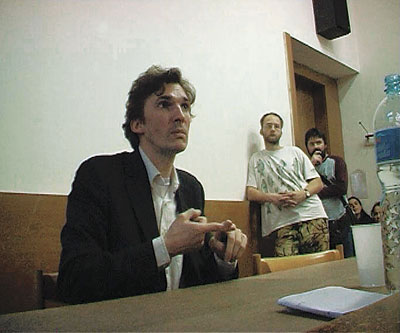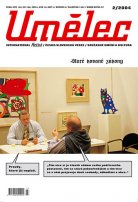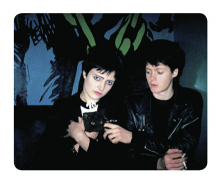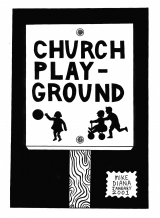| Umělec magazine 2004/2 >> Dance, After All, God is a DJ | List of all editions. | ||||||||||||
|
|||||||||||||
Dance, After All, God is a DJUmělec magazine 2004/201.02.2004 Tomáš Pospiszyl | en cs |
|||||||||||||
|
The Contemporary Art Mechanisms
and Contemplations of Nicolas Bourriaud It requires courage to grasp a global theory of modern art. The last wave of such efforts were carried out as postmodernist re-evaluations of well-established canons, essentially a revisionist effort encompassing even distant post-war avant-garde history, and paradoxically ignoring complex synchronicities. Even large elaborate art histories often omit the last two decades of the 20th Century, leaving them as an open chapter, with its certain names but uncertain summary. From such a point of view Postproduction, by Nicolas Bourriaud, signifies an ambitious overall meaning for Czech arts. Identifying contemporary art, Bourriaud examines the art of the internet age. This art he defines merely as interpretations and reproductions of existing cultural products. The present-day artist is not unlike a DJ who makes new songs out of existing footage. Also, the artist is like a programmer or an internet browser, who does not create anything new, but seeks his own way through the world of existing information and symbols, offering a new mode of decoding existing reality. At most, contemporary art works resemble a “communication portal.” According to Bourriaud, the difference between cultural production and consumption becomes nearly invisible, and an artist and a consumer of culture are hardly to be distinguished from each other. If this is the case, then it represents the most massive revolution in human cultural history. But since we are more likely skeptical about the possibility of technology to change the nature of society globally, we are unlikely to believe the bulk of Bourriaud’s projection. Even though the internet is a great tool, we continue to read books, go to libraries and art shows, and besides on-line dates we still have normal relationships. Many features of contemporary art have a powerful influence on art itself, and according to Bourriaud they are considered as revolutionary and brand new, even if they may not be so new. Art has always been self-consuming, even cannibalistic, since before the internet started. Bourriaud’s views on contemporary sampling, or the use of seminal art features in new contexts are not persuasive at all, since these may not really differ from similar art methods of the past. Art creators have always behaved like thieves, but today it is much easier than before due to advanced technologies. But the principle stays the same. Recycling motifs and art techniques is the basic feature of art itself, and due to this feature, art history can be grasped. Here we may use historical analysis of the term “originality,” disliked by Bourriaud, which became important within the 19th and 20th Centuries. Rosalind Krauss in her study describes this originality as often ostensible, and she claims modern great men created and mixed varied available existing tracks. In the 19th Century, Édouard Manet made a remix of Vélasquéz and Veronese, but it took him much longer than it would take today, with Photoshop. Auguste Rodin made complicated loops and recycled himself. Pablo Picasso was like a Google search of world art - like an omnipresent search engine equipped with the genius of speed and austerity. In a second chapter of his book, Bourriaud writes of new art work strategies, and it seems all of these had already been implied in the 50s by the Situationists, independent of new available technologies. At issue is the appearance of post-productive strategies, and whether those are in alarmingly greater volume and should be taken as universal principles. I reckon that has a long time to come. Bourriaud’s book brings significant discussion of works by Jason Rhoades, Thomas Hirschhorn, Rikrit Tiravaniji, Piere Huyghe and Maurizius Cattelano. In the language of Bourriaud, it serves as an entry of his favorite references to his homepage. His meditations are fragmented, and the range of examples and of work extent make the whole text rather like a long magazine article, a theoretical novel or a curator’s concept of a planned or imaginary exhibition. Such an exhibition may legitimize certain artists and their works, but they do not write art histories. The curator’s job is more the job of an artist than an art historian. The first one relies on instinct, taste and inspiration, the second must rely on a wider field of existing literature and theoretical research. As it should appear from these lines, it is a pleasure to disagree with an author such as Bourriaud. If analysis and criticism of his opinions will grow into inspiring and stimulating debate on contemporary art, then the book has served its purpose. Tomáš Pospiszyl Nicolas Bourriaud: Postprodukce. Czech translation from the French by Petr Turek. Praha: Tranzit, 104 pgs, 2004. Photograps by Vinigur Gerbit, (How to use granades, 2004)
01.02.2004
Recommended articles
|
|||||||||||||
|
04.02.2020 10:17
Letošní 50. ročník Art Basel přilákal celkem 93 000 návštěvníků a sběratelů z 80 zemí světa. 290 prémiových galerií představilo umělecká díla od počátku 20. století až po současnost. Hlavní sektor přehlídky, tradičně v prvním patře výstavního prostoru, představil 232 předních galerií z celého světa nabízející umění nejvyšší kvality. Veletrh ukázal vzestupný trend prodeje prostřednictvím galerií jak soukromým sbírkám, tak i institucím. Kromě hlavního veletrhu stály za návštěvu i ty přidružené: Volta, Liste a Photo Basel, k tomu doprovodné programy a výstavy v místních institucích, které kvalitou daleko přesahují hranice města tj. Kunsthalle Basel, Kunstmuseum, Tinguely muzeum nebo Fondation Beyeler.
|




































 New book by I.M.Jirous in English at our online bookshop.
New book by I.M.Jirous in English at our online bookshop.
Comments
There are currently no comments.Add new comment